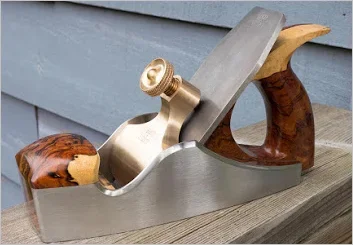francist
Super User
I’ve been fooling around with an old Lenzkirch mantle clock recently. It’s a project I started about 14 years ago (yes, FOURTEEN years) but, well, a few folks have died in between leaving estates to settle and ministering to take precedence. So you’ll have to excuse the fact that I bring this to the table already in progress.
I’m actually pretty much in the home stretch (I hope). I’ve deduced and procured a new suspension spring to enable the movement to function again, and have similarly procured and fitted a replacement glass lens for the front cover. I’ve also been running the bare movement in the test stand on and off now for several months and it keeps good time albeit a little touchy on how it wants to be wound. The work now is putting all the bits back together and in the right package.
Overall the case was not in bad shape although it had undergone a little more neglect than it deserved. The piece itself dates to about 1905 and has that old European train station look to it. What moulding there is, though, is quite delicate and there was one corner that must have taken a few hits.
Here I am inserting some new material a little oversize to be matched in later.



As is typical with items of this age (especially clocks, it seems) someone has been in before me. The little tabs that hold the circular movement into the case were pretty gibbled-up and bent out of alignment. So much so that I really wasn’t sure where the movement was supposed to sit relative to the case walls. I ended up doing a full-on drawing in AutoCAD to understand how all the pieces would line up and not clash in the final assembly, and this also gave me the freedom to redesign three new mounting tabs. It may be overkill, but mine incorporate a semi-circular slot to allow rotation of the movement for setting the beat. At least that’s the idea — we’ll see if it pays off.
I’m a big fan of of using paper templates for cutting, a technique I learned when cutting letters for architectural signs. Rubber cement works well for me and rubs off cleanly afterwards.



The mounting tabs need an offset to position the movement correctly front to back. Once I had my shapes cut and finished to final on the edges, I milled the slots using the rotary table and then a traditional vise setup to machine the offset.




More to come in a bit....
I’m actually pretty much in the home stretch (I hope). I’ve deduced and procured a new suspension spring to enable the movement to function again, and have similarly procured and fitted a replacement glass lens for the front cover. I’ve also been running the bare movement in the test stand on and off now for several months and it keeps good time albeit a little touchy on how it wants to be wound. The work now is putting all the bits back together and in the right package.
Overall the case was not in bad shape although it had undergone a little more neglect than it deserved. The piece itself dates to about 1905 and has that old European train station look to it. What moulding there is, though, is quite delicate and there was one corner that must have taken a few hits.
Here I am inserting some new material a little oversize to be matched in later.
As is typical with items of this age (especially clocks, it seems) someone has been in before me. The little tabs that hold the circular movement into the case were pretty gibbled-up and bent out of alignment. So much so that I really wasn’t sure where the movement was supposed to sit relative to the case walls. I ended up doing a full-on drawing in AutoCAD to understand how all the pieces would line up and not clash in the final assembly, and this also gave me the freedom to redesign three new mounting tabs. It may be overkill, but mine incorporate a semi-circular slot to allow rotation of the movement for setting the beat. At least that’s the idea — we’ll see if it pays off.
I’m a big fan of of using paper templates for cutting, a technique I learned when cutting letters for architectural signs. Rubber cement works well for me and rubs off cleanly afterwards.
The mounting tabs need an offset to position the movement correctly front to back. Once I had my shapes cut and finished to final on the edges, I milled the slots using the rotary table and then a traditional vise setup to machine the offset.
More to come in a bit....

